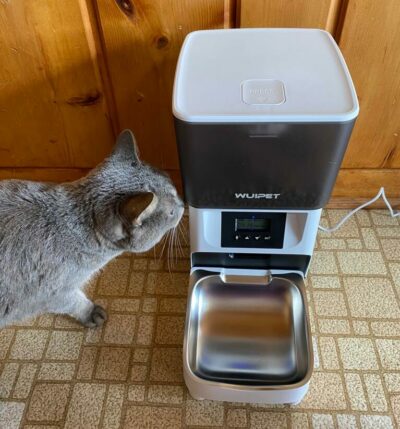
If you are thinking of buying an automatic cat feeder for your pet and are unsure which one would be the most suitable, this guide will help. You can save time and money by considering important aspects before purchasing these devices. Here are some tips to help you make an informed decision.
1. Period of Time the Feeder Will Be Used
Consider how long you’ll need the feeder to run—will it be for 24 hours, a weekend, or a full week? The duration of use will help determine the type of feeder you should choose. For extended use, opt for a reliable, high-quality feeder that can handle multiple days of programming. The Feeder Robot is an excellent option for longer periods, offering flexible scheduling. With its Whisker App, you can program different feeding schedules and activate the one you need at any given time, giving you full control over your cat’s feeding routine. Checking reviews of automatic cat feeders is a good way to gather more info.
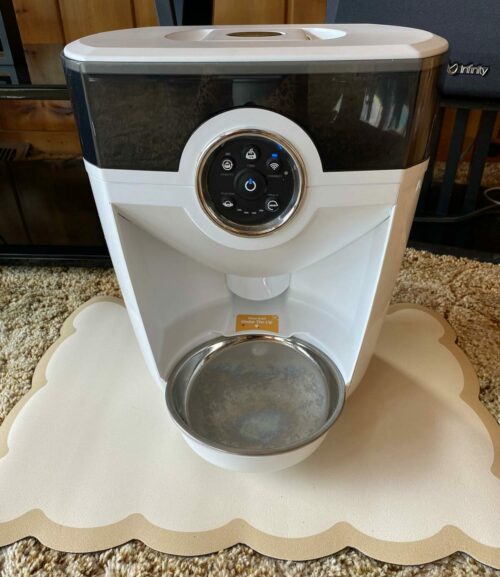
2. Location of the Feeder
Consider where you’ll place the feeder to ensure optimal performance and comfort for your cat:
- Quiet Feeder for Small Spaces: If placing the feeder near bedrooms or in a small apartment, choose a quiet model to avoid disturbances.
- Non-Skid Feet and Weighted Base for Stability: For tiled surfaces, ensure the feeder has non-skid feet to prevent slipping. In the case of carpeted floors, choose a feeder with a weighted base or anti-tip features for added stability. Even with a mat underneath, thick carpets can make the feeder unstable, so a solid, heavy feeder will help prevent it from shifting or tipping.
- Weatherproof and Secure for Outdoors: For outdoor use, opt for a weather-resistant feeder and secure it to prevent tampering or damage from animals.
- Power Source Consideration: Depending on the placement, make sure the feeder has an easy-to-reach power source. If using an AC-powered feeder, ensure a nearby outlet or, ideally, choose a feeder with a long cord. Battery-operated feeders should have a visible battery life indicator to prevent surprises.
3. How Flexible You Need the Programming
If flexibility in setting a feeding schedule is important for you, this is a crucial factor to consider. Automatic feeders vary in their programming features. Basic models may only offer preset intervals, dispensing food at fixed times with limited customization—some may not allow minute-to-minute adjustments, with the shortest interval typically around 15 minutes. On the other hand, advanced feeders, such as Wi-Fi-enabled models, allow precise scheduling through smartphone apps, giving you full control over feeding times and portions. If you need the ability to adjust meal times or frequencies easily, look for a feeder with digital timers or app-based controls, such as the PetSafe Smart Feed, for quick and accurate customization.
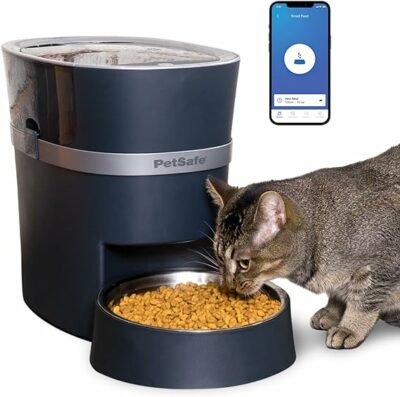
4. Your Cat’s Health and Dietary Needs
If your cat is on a controlled diet, choose an automatic feeder that dispenses small, accurate portions for multiple meals throughout the day. Models like the Petlibro Classic Automatic Feeder and Wopet 7L feeders are great for portion control, helping manage calorie intake and weight. For organic food, ensure the lid is well-sealed to keep it fresh. For cats with dietary restrictions, the SureFeed Microchip or the PortionPRO RX Pet Feeder work well. These feeders allow the designated cat to access its meal while blocking others.
If you feed both wet and dry food, a rotating feeder like the PetSafe 5-Meal Feeder, with ice packs to keep wet food fresh, is a solid choice. Ensure it has a secure lid to prevent premature access, as wet food’s strong scent may tempt cats to steal it. Based on my own experience and insights from the best wet food feeders reviews, wet food tends to be highly fragrant, which can entice cats and lead them to try to steal food from the unit.
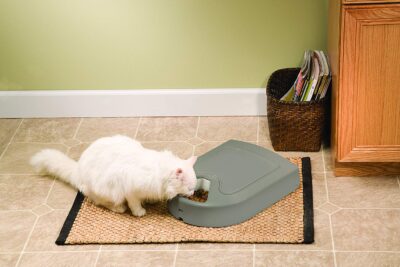
5. Manual Cleaning vs Dishwasher
How you clean your feeder is an important consideration. Choose a feeder that is easy to disassemble and clean, with removable hoppers and trays. If you plan to use the dishwasher, pay attention to the type of plastic or metal the feeder is made from. Some plastics can release toxins under high heat (study published by NIH), so opt for feeders made from safer plastics like polypropylene (PP), polyethylene (PE), or BPA-free plastics such as Tritan. These are more durable and less likely to leach harmful chemicals (avoid plastics numbered 3, 6, and 7). Additionally, if the bowl is made of stainless steel, ensure it’s high quality. Some lower-quality bowls are only coated with stainless steel, and these can release toxins when exposed to high heat. Choose bowls made from solid, high-quality stainless steel for durability and safety.
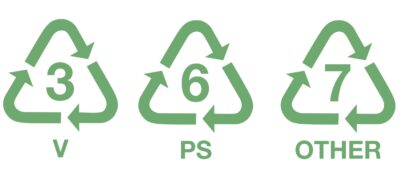
6. Single or Multiple Cats
For a single cat, a food capacity of around 6 lbs is sufficient; any more than that may cause the food to go stale. If you have multiple cats, opt for a feeder with a larger hopper and multiple feeding schedules to accommodate both pets. While some feeders feature splitters to dispense food into separate bowls, these typically place the bowls next to each other, so the cats will still see one another while eating.
For a more ideal solution to prevent food aggression, consider the Oneisall Two-Cat Automatic Feeder. This feeder dispenses food equally into two bowls positioned in opposite directions, ensuring the cats don’t see each other while eating. The Oneisall also features a heavy base for added stability and is known for dispensing small, precise portions.
For cats that don’t share well, selective feeders are a great option. They block one cat’s access while allowing the other to eat. To set this up, use two feeders: a selective RFID feeder such as the SureFeed Microchip Feeder for the cat who doesn’t get to eat much because the other cat doesn’t allow it, and a cat-proof feeder for the food-driven or aggressive cat.
The SureFeed Allows a Cat to Eat While Blocking His Sister
7. Your Cat’s Personality
Either if your cat is food-driven, timid, or gobbler, you need to consider its personality when it’s time to choose the feeder that will take care of your feline friend’s feeding. For example, for food-driven cats you need to choose a cat feeder that can resist all the cat’s atempts to break into the feeder. Pay attention to the lid and chute. For instance, the CSF-3 cat feeder provides you accessories so you can mount it on a wall with a special setup, making impossible for a cat to steal food. They need to be secured and cat-prof. If your cat is skittish or shy, pick a quiet unit so it won’t be afraid of it.
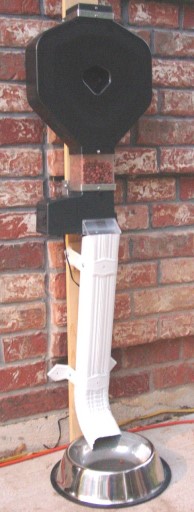
Feeder Selection Recap
To help you choose the best automatic feeder for your cat, here’s a quick recap of the key points to consider based on your needs and your cat’s needs.
- Single Cat: Choose a feeder with a smaller food capacity (around 6 lbs) and simple controls. For controlled diets, opt for models like the Petlibro Classic Automatic Feeder, which offers portion control.
- Multiple Cats: For larger groups, choose a feeder with a larger hopper and multiple feeding schedules. The Oneisall Two-Cat Automatic Feeder is ideal, with separate bowls to prevent food aggression and a stable base for added safety. For cats who can’t share, RFID cat feeders are a great option.
- Wet & Dry Food: Opt for rotating feeders like the PetSafe 5-Meal Feeder for both food types. Ensure it has a secure lid and ice packs for wet food freshness.
- Cats with Dietary Restrictions: For portion control and customization, consider feeders like the SureFeed Microchip Feeder or PortionPRO RX Pet Feeder, which allow individual feeding based on the cat’s needs. For cats on a diet eating dry food, pick devices that dispense small portions, many times per day.
- Feeder Location: Place a quiet feeder in small spaces or bedrooms to avoid disturbances. For stability on tiled surfaces, look for feeders with non-skid feet, or choose a weighted base for carpets. For outdoor use, ensure the feeder is weatherproof and secure.
- Power Source: Ensure the feeder’s power source is easily accessible. Choose AC-powered feeders with long cords or battery-operated feeders with visible battery life indicators.
- Programming Flexibility: For precise feeding times and portions, choose Wi-Fi-enabled feeders with app-based controls like the PetSafe Smart Feed, allowing easy customization. For extended use, opt for reliable models like the Feeder Robot, which offers flexible scheduling via the Whisker App.
- Cleaning: Opt for feeders that are easy to disassemble and clean, with removable parts. For dishwasher use, select feeders made from safe plastics like polypropylene (PP) or high-quality stainless steel.
- Cat’s Personality: Consider your cat’s behavior when choosing a feeder. For food-driven cats, choose a secure feeder like the CSF-Super Feeder, which can be mounted to prevent food theft. For timid cats, pick a quiet unit to avoid startling them.
Final Thoughts
Automatic feeders are a fantastic solution for busy pet owners, ensuring your cat gets fed on time, even when you’re not home. However, it’s essential to first understand how and where you plan to use the feeder before choosing the type that best suits your needs. Once you’ve narrowed down your preliminary options, dive deeper into the technical essentials tips to choose the right automatic feeder for your cat, ensuring it meets all your functional requirements. This way, you’ll make an informed choice that fits perfectly with your lifestyle. With the right feeder, you can simplify your routine while keeping your cat healthy and happy.
If you’re already curious about any of the devices mentioned, visit Amazon > here to check out customer reviews and the latest prices to make an informed choice.
Great info with lots of detail. If I were a cat owner and needed a cat feeder, this would become THE source for me. If I knew people who owned a cat and who needed a cat feeder, I would refer them to this site.
Thank you very much Sonya! I am very happy to know my work can help people and that is useful as you said.
Meredith, don’t forget to come visit me once you get that cute kitten :-)
This is such a well structured article. Nice on Lorena! I have a friend who has a cat and a dog in the same house. lol.. Feeding them is a big problem! The dog likes dry food, so the cat can’t be given that otherwise CATACLYSM!!!!!! :)
Yeah, I can imagine the problems your friend has lol! Thank you for your comment, that is a great input to keep me writing more articles like this. Thanks again!!